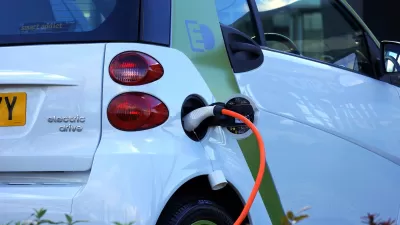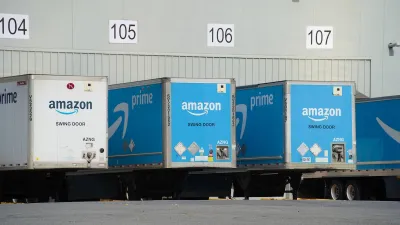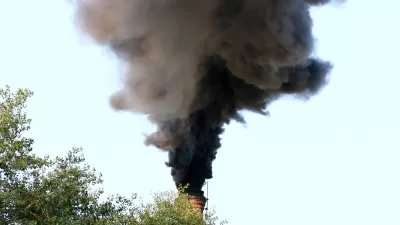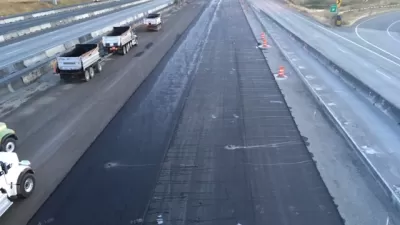To reduce harmful particulate matter emissions, we need fewer cars on the road—electric or otherwise, according to the findings of a recent report.

A new report from the Organization for Economic Cooperation and Development (OECD) warns that eliminating tailpipe emissions alone won't make vehicle travel pollution-free. Even after replacing gasoline vehicles with electric ones to reduce greenhouse gas emissions, particulate matter (PM) resulting from tire, brake, clutch, and road wear remains a significant source of hazardous pollution. An article by Lloyd Alter shares insight into the report's conclusions.
Exposure to PM emissions can cause heart and lung damage, ranking as the seventh most important risk factor for mortality worldwide in 2015. With traffic concentrated in areas where the most people live and work, non-exhaust emissions pose a bigger health hazard than emissions from sources that are more isolated or highly regulated. While it's difficult to measure the exact toll of PM emissions on human health, the OECD estimates more than 4 million premature deaths a year resulting from the inhalation of toxic non-exhaust emissions, according to Alter.
While electric cars make a positive contribution to the fight to reduce greenhouse gas emissions, reducing harmful airborne pollutants requires fewer vehicles on the road. The report's recommendations include encouraging electric car manufacturers to produce lighter vehicles(putting less wear on the tires and thus less particulate matter into the air), disincentivizing the use of private vehicles through low-emission zones and congestion pricing programs, and promoting the use of alternate transportation modes.
FULL STORY: OECD Says Electric Cars Won’t Save Us From Pollution

Planetizen Federal Action Tracker
A weekly monitor of how Trump’s orders and actions are impacting planners and planning in America.

Congressman Proposes Bill to Rename DC Metro “Trump Train”
The Make Autorail Great Again Act would withhold federal funding to the system until the Washington Metropolitan Area Transit Authority (WMATA), rebrands as the Washington Metropolitan Authority for Greater Access (WMAGA).

The Simple Legislative Tool Transforming Vacant Downtowns
In California, Michigan and Georgia, an easy win is bringing dollars — and delight — back to city centers.

The States Losing Rural Delivery Rooms at an Alarming Pace
In some states, as few as 9% of rural hospitals still deliver babies. As a result, rising pre-term births, no adequate pre-term care and "harrowing" close calls are a growing reality.

The Small South Asian Republic Going all in on EVs
Thanks to one simple policy change less than five years ago, 65% of new cars in this Himalayan country are now electric.

DC Backpedals on Bike Lane Protection, Swaps Barriers for Paint
Citing aesthetic concerns, the city is removing the concrete barriers and flexposts that once separated Arizona Avenue cyclists from motor vehicles.
Urban Design for Planners 1: Software Tools
This six-course series explores essential urban design concepts using open source software and equips planners with the tools they need to participate fully in the urban design process.
Planning for Universal Design
Learn the tools for implementing Universal Design in planning regulations.
Smith Gee Studio
City of Charlotte
City of Camden Redevelopment Agency
City of Astoria
Transportation Research & Education Center (TREC) at Portland State University
US High Speed Rail Association
City of Camden Redevelopment Agency
Municipality of Princeton (NJ)





























